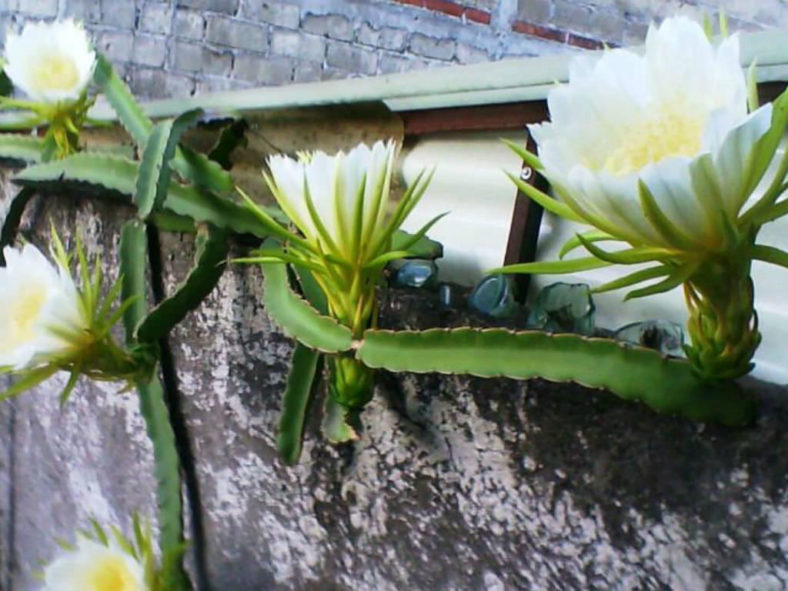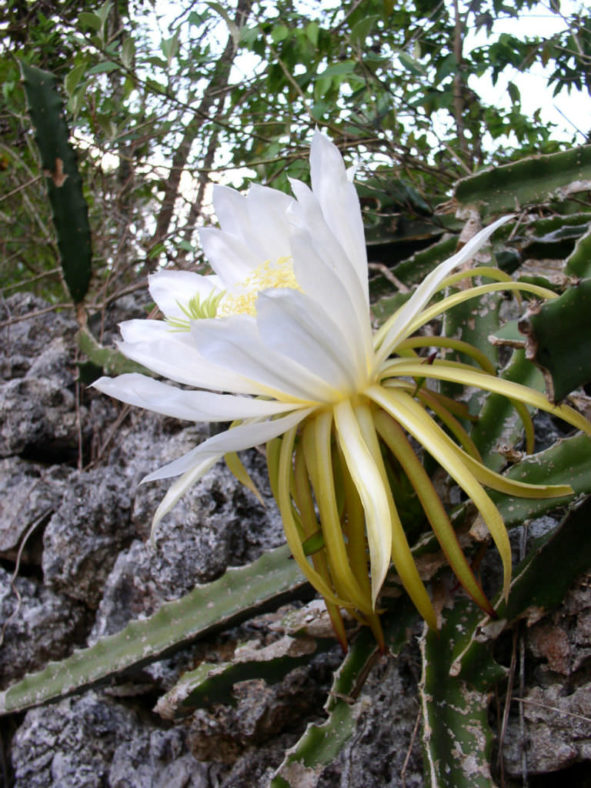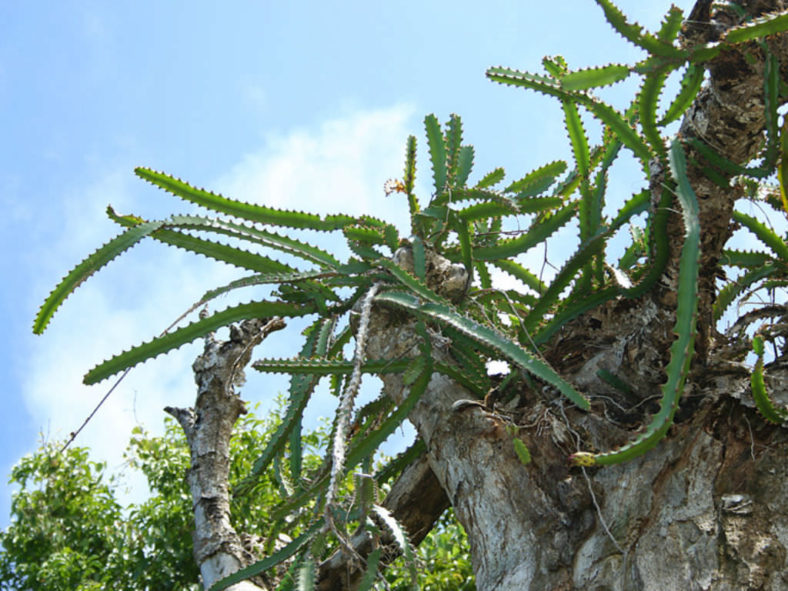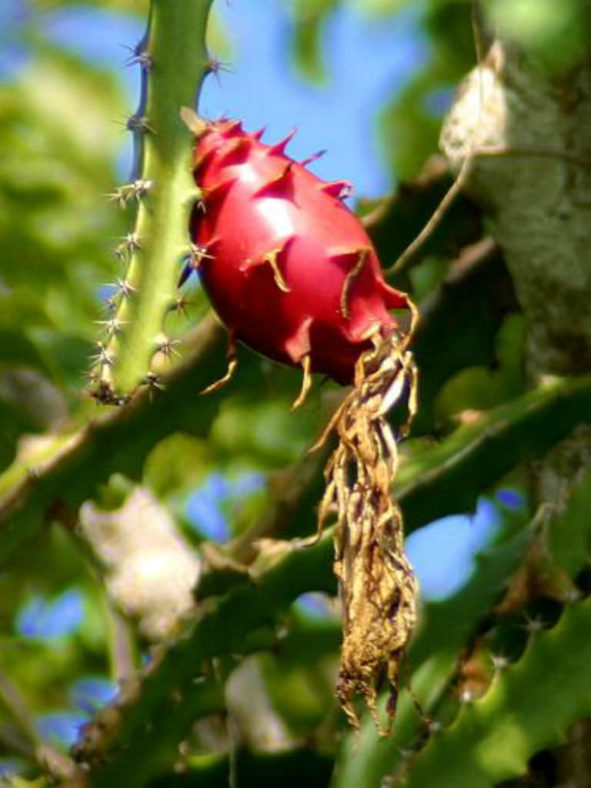Scientific Name
Selenicereus triangularis (L.) D.R.Hunt
Common Name(s)
Strawberry Pear
Synonym(s)
Cactus triangularis, Cereaster triangularis, Cereus triangularis, Cereus trigonus, Hylocereus triangularis, Hylocereus trigonus, Selenicereus trigonus
Scientific Classification
Family: Cactaceae
Subfamily: Cactoideae
Tribe: Hylocereeae
Genus: Selenicereus
Etymology
The specific epithet "triangularis" (pronounced "try-an-gew-LAIR-iss") means "triangular" and refers to the stems of this species, which often have three prominent ribs.
Origin
Selenicereus triangularis is native to Puerto Rico and the Virgin Islands. It is common throughout dry areas where it grows as a terrestrial or epiphytic cactus.
Description
Selenicereus triangularis, formerly known as Hylocereus triangularis or Hylocereus trigonus, is a highly branched cactus with numerous green, sprawling or vining stems with many lateral branches. The fleshy stems have 3 or 4 prominent undulate ribs and can grow up to 33 feet (10 m) long and 0.8 inches (2 cm) thick.
The funnel-shaped flowers are fragrant, bloom at night, and reach a length of 10 inches (25 cm). The outer tepals are fleshy and green, while the inner tepals are white, turning yellowish as they mature. The fruits are oval, pink-purple, and can grow up to 5.6 inches (14 cm) long and 3 inches (7.5 cm) in diameter.

How to Grow and Care for Selenicereus triangularis
Hardiness: USDA hardiness zones 10a to 11b: from 30°F (-1.1°C) to 50°F (10°C).
Like most cacti, Cereus is a fairly low-maintenance and hardy plant. Ensure they receive sufficient water without becoming waterlogged, especially during the summer, and fertilize them for optimal results. If the roots have become black or overly soft, the cactus could be experiencing root rot. Cut away the affected parts and replant. Most gardeners interested in cacti should be able to cultivate these without much problem.
If your Cereus outgrows its container, it may become necessary to repot it. If so, ensure the soil is dry and remove the pot. Knock away old soil and prune away rotted or dead roots. Then, replace it in a new pot and backfill with fresh soil. Do not overwater cacti planted in new pots, as this can lead to root rot. The cacti should be left dry for about a week and then watered lightly.
These cacti propagate quite easily from cuttings. Simply sever a branch and replant in moist, well-drained soil.
See more at How to Grow and Care for Cereus.
Links
- Back to genus Selenicereus
- Succupedia: Browse succulents by Scientific Name, Common Name, Genus, Family, USDA Hardiness Zone, Origin, or cacti by Genus
Photo Gallery
Click on a photo to see a larger version.


